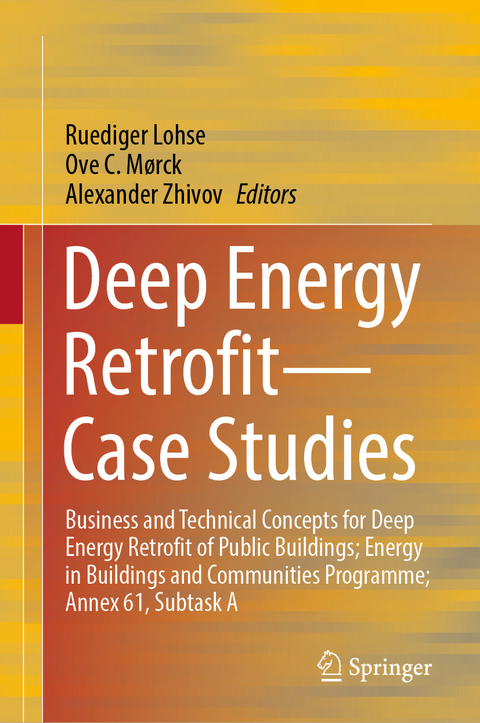
Deep Energy Retrofit—Case Studies
Springer International Publishing (Verlag)
978-3-031-17516-9 (ISBN)
Deep Energy Retrofit (DER) is a major building renovation project in which site energy use intensity (including plug loads) has been reduced by at least 50% from the pre-renovation baseline with a corresponding improvement in indoor environmental quality and comfort. Lessons learned from the case studies and experiences of the team clearly indicate that DER can be achieved with the application of "bundles" of a limited number of core technologies readily available on the market. Specific characteristics of some of these core technology bundles generally depend on the technologies available on an individual nation's market, on the minimum requirements of national standards, and on economics (as determined by a life cycle cost [LCC] analysis).
lt;p> Dr. C. Mørck has a Ph.D. in engineering and a M.Sc. degree in Physics from the University of Copenhagen, Denmark. He has worked with planning and implementation of Energy Conservation and Renewable Energy integration in buildings in Denmark and other European countries since 1978, first as a researcher at the Technical University of Denmark, and later as co-founder and (until 2016) director at Cenergia Energy Consultants, Denmark, where he assumed the role of project leader in the planning and implementation of many energy projects on both national and international scales. This high level of project management continued in his final position at Kuben Management, where he oversaw national and international R&D projects.
Dr. Mørck was leading the project at the Danish Energy Agency that resulted in Denmark becoming the first country in Europe to introduce "energy labelling" of buildings to promote energy savings. He was the Operating Agent of Task I of the IEA Solar Heating and Cooling Programme, and recently has been technical coordinator of the EU-CONCERTO project Class1 and work package leader for the European Commission Horizon2020 "CoNZEBs" and "MORE-CONNECT" projects. Dr. Mørck was also subtask leader under IEA EBC Annexes 56, 61, 63, and 75, and leader of the Danish EUDP Energy Refurbishment with PVT, Smart Grid Management and Energy Storage project.1. Project Summary and Analysis.- 1.1. Introduction.- 1.2. Climate Zones.- 1.3. Der Measure Bundles.- 1.4. Investment Costs.- 1.5. Impact of Der Measure Bundles.- 1.6. Decision Making Process.- 1.7. Financing and Business Models.- 1.8. Cost Effectiveness of Der.- 1.9. Lessons Learned.- 2. Conclusion.- References.- Appendix A: Case Study - Austria.- Appendix B: Case Study - Denmark.- Appendix C: Case Study - Estonia.- Appendix D: Case Study - Germany.- Appendix E: Case Study -Ireland.- Appendix F: Case Study - Latvia.- Appendix G: Case Studies - Montenegro .- Appendix H: Case Study - The Netherlands .- Appendix I: Case Study - United Kingdom.- Appendix J: Case Studies: United States.
| Erscheinungsdatum | 05.01.2023 |
|---|---|
| Zusatzinfo | XXXV, 459 p. 315 illus., 280 illus. in color. |
| Verlagsort | Cham |
| Sprache | englisch |
| Maße | 155 x 235 mm |
| Gewicht | 949 g |
| Themenwelt | Naturwissenschaften ► Biologie ► Ökologie / Naturschutz |
| Technik ► Elektrotechnik / Energietechnik | |
| Schlagworte | Building Renovation • Climate comfort zone • deep energy retrofit • Energy saving strategies and reduction levels • Envelope-related technologies • Indoor environmental quality and confort • Life Cycle Cost Analysis |
| ISBN-10 | 3-031-17516-6 / 3031175166 |
| ISBN-13 | 978-3-031-17516-9 / 9783031175169 |
| Zustand | Neuware |
| Haben Sie eine Frage zum Produkt? |
aus dem Bereich


